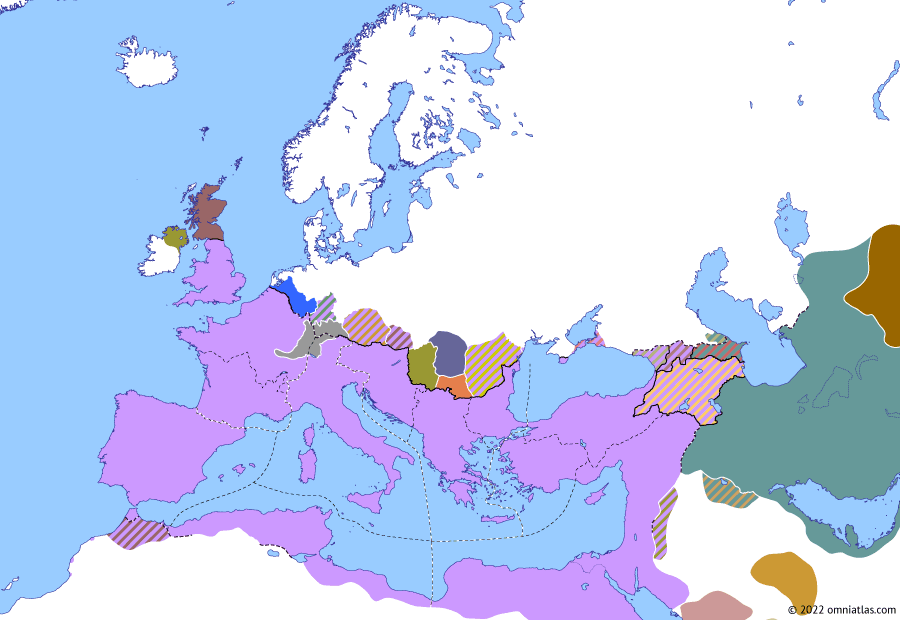Europe 302: Battle of Lingones

circa 302
c. 302
Diocletian and the Tetrarchy
-27–68 Julio-Claudian Dynasty
68–96 Flavian Dynasty
96–192 Nerva–Antonine Dynasty
192–235 Severan Dynasty
235–268 Crisis of the Third Century: Turmoil
268–284 Crisis of the Third Century: Restoration
284–311 Diocletian and the Tetrarchy
311–363 Constantinian Dynasty
363–383 Valentinianic Dynasty
383–408 Theodosian Dynasty: Divided Empire
408–425 Theodosian Dynasty: The West Besieged
425–442 Theodosian Dynasty: Fall of Africa
442–1803 NO MAPS FOR THIS PERIOD YET
1803–1814 Napoleonic Wars
1814–1815 Vienna and Waterloo
1815–1848 Congress Europe
1848–1850 Springtime of Peoples
1850–1859 Crimean War
1859–1862 Italian Unification
1862–1871 German Unification
1871–1914 Imperial Europe
1914–1918 Great War
1918–1922 Armistice Europe
1922–1939 Rise of Fascism
1939–1942 World War II: Blitzkrieg
1942–1945 World War II: Fall of the Third Reich
1945–1990 Cold War
1990–2010 Post-Cold War Europe
2010–pres Crisis of Europe
Battle of Lingones
Dec 284 Diocletian vs Carinus
Jul 285 Battle of Margum
early 287 Carausian Revolt
1 Mar 293 First Tetrarchy
Sep 296 Battle of Calleva Atrebatum
spr 297 Second Battle of Carrhae
late 298 Galerius’ invasion of Persia
c. 302 Battle of Lingones
1 May 305 Second Tetrarchy
28 Oct 306 Constantine and Maxentius
fall 307 Galerius vs Maxentius
11 Nov 308 Council of Carnuntum
Jul 310 Maximian’s Last Stand
10 Jun 311 Collapse of the Tetrarchy
Between 299 and 305 the Roman Empire went largely unthreatened by war, perhaps a testament to the general success of Diocletian’s reforms. One exception was in around 302, when an Alemannic raiding force almost captured Constantius at Lingones, deep within Gaul. However, Constantius soon defeated the invaders and drove them back across the Rhine, stabilizing that frontier as well.